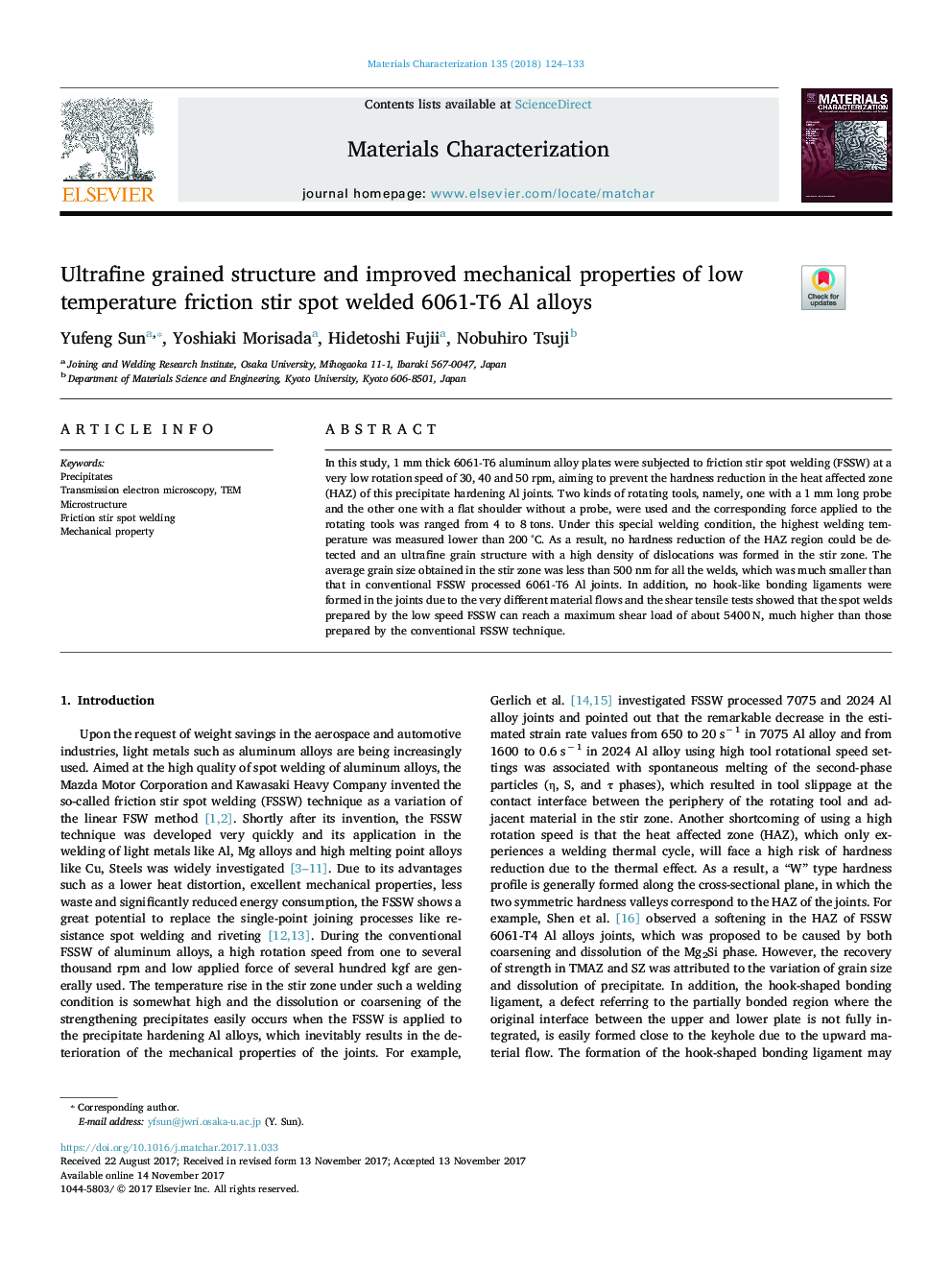| Article ID | Journal | Published Year | Pages | File Type |
|---|---|---|---|---|
| 7969488 | Materials Characterization | 2018 | 10 Pages |
Abstract
In this study, 1 mm thick 6061-T6 aluminum alloy plates were subjected to friction stir spot welding (FSSW) at a very low rotation speed of 30, 40 and 50 rpm, aiming to prevent the hardness reduction in the heat affected zone (HAZ) of this precipitate hardening Al joints. Two kinds of rotating tools, namely, one with a 1 mm long probe and the other one with a flat shoulder without a probe, were used and the corresponding force applied to the rotating tools was ranged from 4 to 8 tons. Under this special welding condition, the highest welding temperature was measured lower than 200 °C. As a result, no hardness reduction of the HAZ region could be detected and an ultrafine grain structure with a high density of dislocations was formed in the stir zone. The average grain size obtained in the stir zone was less than 500 nm for all the welds, which was much smaller than that in conventional FSSW processed 6061-T6 Al joints. In addition, no hook-like bonding ligaments were formed in the joints due to the very different material flows and the shear tensile tests showed that the spot welds prepared by the low speed FSSW can reach a maximum shear load of about 5400 N, much higher than those prepared by the conventional FSSW technique.
Keywords
Related Topics
Physical Sciences and Engineering
Materials Science
Materials Science (General)
Authors
Yufeng Sun, Yoshiaki Morisada, Hidetoshi Fujii, Nobuhiro Tsuji,
